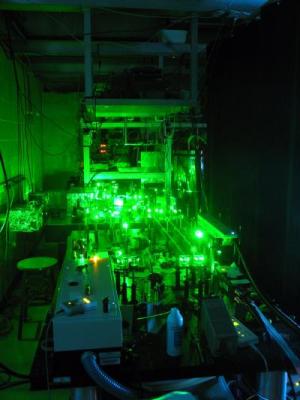A research team including members from UC Santa Barbara (UCSB) and University of Southern California (USC) has come out with the invention of an electron paramagnetic resonance (EPR) spectrometer that helps scientists study minute, moving molecules at a high resolution.

This is an EPR spectrometer at UCSB.
The research team was involved in the study of spinning of free radicals and nitrogen atoms that are trapped within a diamond. The team used an EPR spectrometer that is powered by a free electron laser (FEL) with electromagnetic radiation that is as high as 240 GHz.
The research team comprising UCSB and USC has published their paper in the journal, Nature. Susumu Takahashi, Assistant Professor of Chemistry at the USC Dornsife College of Letters, Arts and Sciences and the lead member of the research team reports that their finding of a “free-electron based laser-powered EPR spectrometer” is helpful in imaging molecules in motion.
Though the EPR spectroscopy has been used in the study of tiny molecules in motion in the past several years, the excited electrons, due to the power of magnetic fields and pulses tend to repel the radiation caused by laser power.
Mark Sherwin, Professor of Physics and Director of the Institute for Terahertz Science and Technology at UCSB, stated that their finding of an FEL-powered EPR is able to wipe out this shortcoming by allowing electrons to report on faster motions occurring over longer distances.
The new EPR spectroscopy is expected to open new avenues in the discovery of novel drugs and plastic solar cells with high energy efficiency.
Disclaimer: The views expressed here are those of the author expressed in their private capacity and do not necessarily represent the views of AZoM.com Limited T/A AZoNetwork the owner and operator of this website. This disclaimer forms part of the Terms and conditions of use of this website.